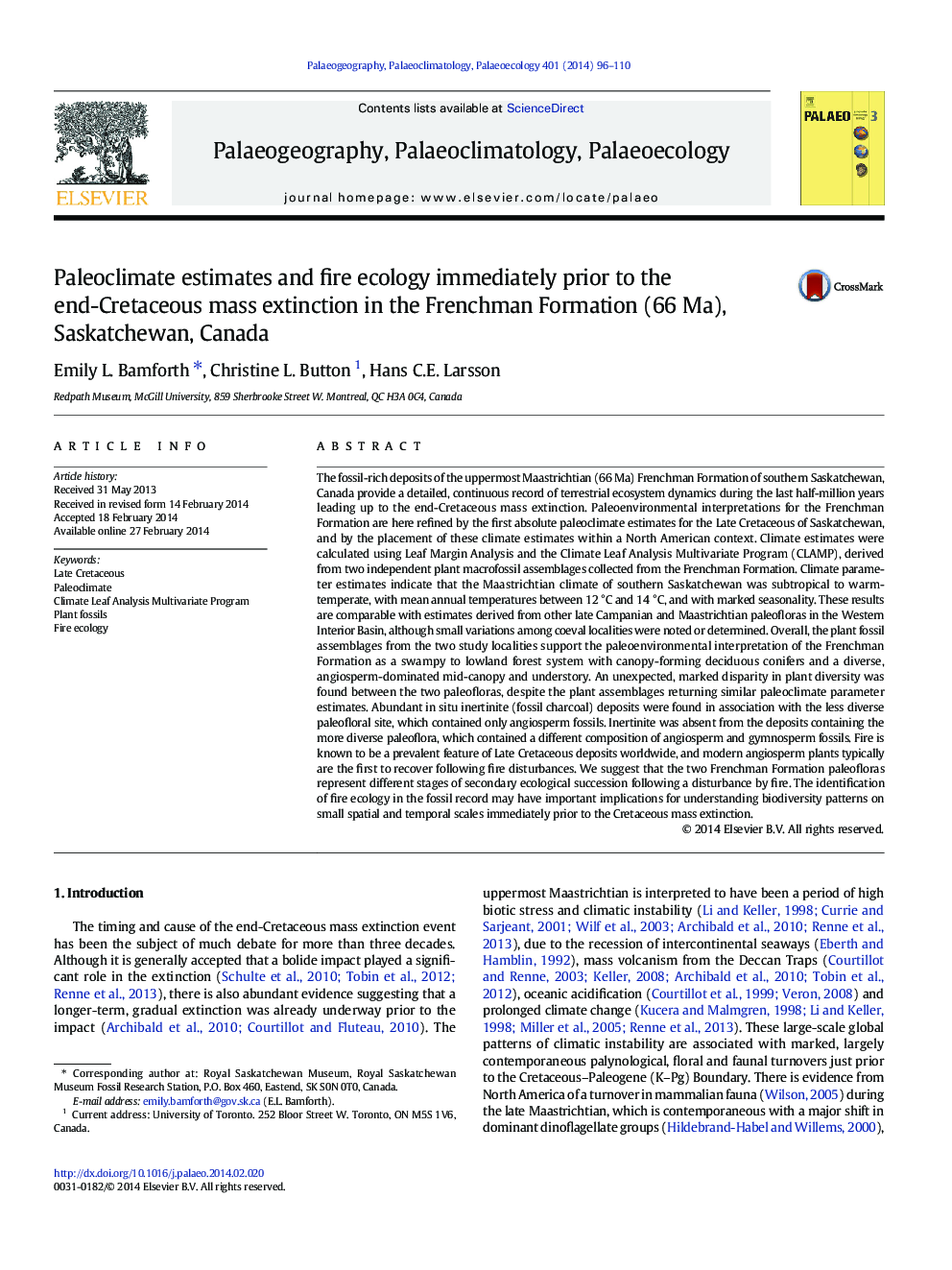| کد مقاله | کد نشریه | سال انتشار | مقاله انگلیسی | نسخه تمام متن |
|---|---|---|---|---|
| 4466276 | 1622189 | 2014 | 15 صفحه PDF | دانلود رایگان |

• First paleoclimate estimates for the Late Cretaceous of Saskatchewan
• Paleoclimate estimates derived from fossil leaf physiogamy
• Paleoenvironment and biodiversity dynamics just prior to the K–Pg extinction
• Paleoclimate comparisons of latest Cretaceous Western Interior Basin localities
• Evidence of ecological recovery from local fire disturbance in the fossil record
The fossil-rich deposits of the uppermost Maastrichtian (66 Ma) Frenchman Formation of southern Saskatchewan, Canada provide a detailed, continuous record of terrestrial ecosystem dynamics during the last half-million years leading up to the end-Cretaceous mass extinction. Paleoenvironmental interpretations for the Frenchman Formation are here refined by the first absolute paleoclimate estimates for the Late Cretaceous of Saskatchewan, and by the placement of these climate estimates within a North American context. Climate estimates were calculated using Leaf Margin Analysis and the Climate Leaf Analysis Multivariate Program (CLAMP), derived from two independent plant macrofossil assemblages collected from the Frenchman Formation. Climate parameter estimates indicate that the Maastrichtian climate of southern Saskatchewan was subtropical to warm-temperate, with mean annual temperatures between 12 °C and 14 °C, and with marked seasonality. These results are comparable with estimates derived from other late Campanian and Maastrichtian paleofloras in the Western Interior Basin, although small variations among coeval localities were noted or determined. Overall, the plant fossil assemblages from the two study localities support the paleoenvironmental interpretation of the Frenchman Formation as a swampy to lowland forest system with canopy-forming deciduous conifers and a diverse, angiosperm-dominated mid-canopy and understory. An unexpected, marked disparity in plant diversity was found between the two paleofloras, despite the plant assemblages returning similar paleoclimate parameter estimates. Abundant in situ inertinite (fossil charcoal) deposits were found in association with the less diverse paleofloral site, which contained only angiosperm fossils. Inertinite was absent from the deposits containing the more diverse paleoflora, which contained a different composition of angiosperm and gymnosperm fossils. Fire is known to be a prevalent feature of Late Cretaceous deposits worldwide, and modern angiosperm plants typically are the first to recover following fire disturbances. We suggest that the two Frenchman Formation paleofloras represent different stages of secondary ecological succession following a disturbance by fire. The identification of fire ecology in the fossil record may have important implications for understanding biodiversity patterns on small spatial and temporal scales immediately prior to the Cretaceous mass extinction.
Journal: Palaeogeography, Palaeoclimatology, Palaeoecology - Volume 401, 1 May 2014, Pages 96–110